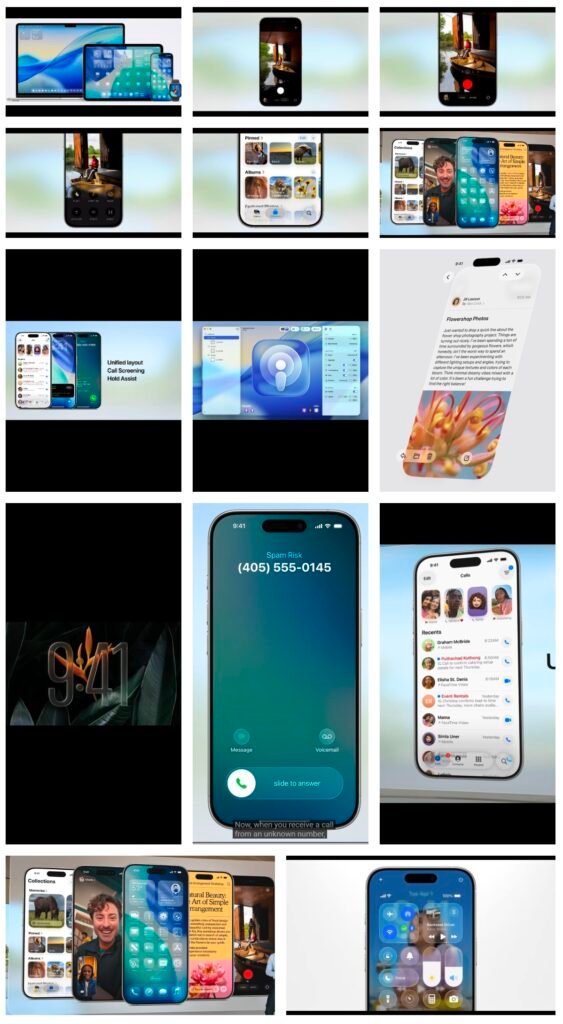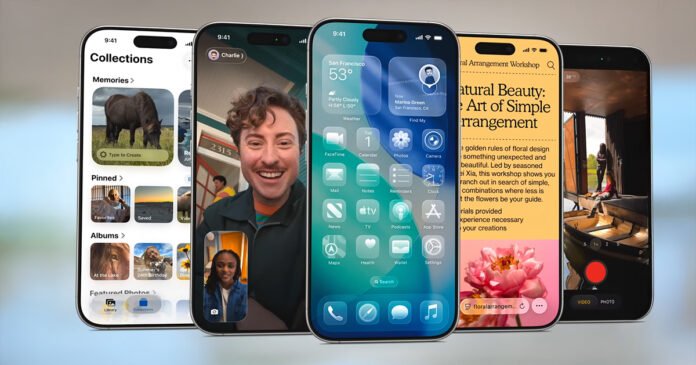Apple has officially ended the long-running visual resemblance between its iOS interface and Xiaomi’s Android-based HyperOS. With the reveal of iOS 26 and its all-new Liquid Glass UI at WWDC 2025, Apple is now moving in a completely different design direction—one that makes a clean break from the minimal, flat aesthetic that both platforms had shared since the days of MIUI 12.
WWDC 2025 Redefines Apple’s Visual Identity with Liquid Glass
Apple’s design language has always influenced the mobile world. But for the past few years, iOS and Android skins—especially Xiaomi’s HyperOS—began to look eerily similar. Subtle transparency, flat UI cards, rounded icons, and even gesture animations started mirroring each other. That ends now.
Liquid Glass is Apple’s boldest visual shift in over a decade. It introduces multi-layered transparency, refined reflections, and adaptive lighting that respond in real time. Inspired by the company’s spatial computing platform, visionOS, the new interface emphasizes depth, clarity, and motion—delivering an experience that feels not just premium, but alive. iOS now engages the senses with every swipe, tap, and scroll, leaving behind the neutral tone of HyperOS’s flat visuals.

Liquid Glass vs HyperOS: A Design Philosophy Split
The divide between Apple and Xiaomi is no longer subtle. With Liquid Glass, Apple is embracing complexity and elegance—an interface that glows, responds, and breathes. The rounded corners, frosted blur effects, and desktop-style vertical menus in iOS 26 give it a distinct personality that’s impossible to miss.
HyperOS, on the other hand, continues to follow a function-first approach. While it does support mild transparency and minimal animations, Xiaomi has always prioritized customization, performance, and system simplicity. Its interface remains fast, lightweight, and easy to control—but it no longer carries the same visual resemblance to Apple’s.
Apple’s decision to part ways with flat design marks a conscious effort to reclaim its design leadership. iOS 26 doesn’t just look better—it feels more premium in every interaction. Meanwhile, HyperOS remains a go-to choice for users who value flexibility over flair.
Implications for the Mobile Industry and Brand Identity
This shift has broader implications for the industry. Apple is positioning iOS not just as a smartphone OS, but as a luxury digital experience. Every detail in Liquid Glass feels handcrafted for the future—whether it’s the way a notification appears or how a menu slides from the edge.
In contrast, Xiaomi’s HyperOS solidifies its identity as a toolkit for power users. It gives people deep control over themes, gestures, widgets, and system behavior. HyperOS doesn’t aim to impress with animations—it wants to empower users with customization.
This divergence signals the start of a new chapter in mobile UI development. Users now face a clearer choice:
Do you want the visual artistry of Apple, or the configurable freedom of Xiaomi?
Apple has leaned into its brand image—exclusive, polished, and cohesive—while Xiaomi continues to champion personalization and utility.
For Power Users: Exploring More with HyperOS
Although it no longer resembles iOS in appearance, HyperOS remains a powerful platform. Xiaomi users looking to enhance their experience further can turn to platforms like HyperOSUpdates.com or third-party tools such as MemeOS Enhancer to unlock hidden features and advanced tweaks. These tools allow users to shape their devices the way they want—something Apple still restricts in favor of uniform design control.
Moving Forward: Two Ecosystems, Two Experiences
The launch of Liquid Glass marks a turning point for Apple. iOS is no longer defined by trends or visual parity—it now sets its own tone with an interface that fuses hardware capability with artistic depth. Whether it’s the subtle shimmer of a control panel or the layered fog beneath widgets, iOS 26 is built to feel luxurious and alive.
Xiaomi, meanwhile, is doubling down on consistency, utility, and system performance. HyperOS doesn’t try to match Apple’s aesthetics because it doesn’t need to. Its users are drawn to reliability, openness, and smart ecosystem integration—especially in markets where Xiaomi devices dominate across smartphones, TVs, smart homes, and even EVs.
Conclusion: Liquid Glass Ends the Era of Visual Similarity
With WWDC 2025, Apple has officially turned the page. Liquid Glass has ended the era where iOS and Android UI looked interchangeable. Now, there are two clear schools of design: one that values immersive beauty, and one that favors empowered usability.
The future of mobile interface design is no longer shared—it’s divergent by design.

